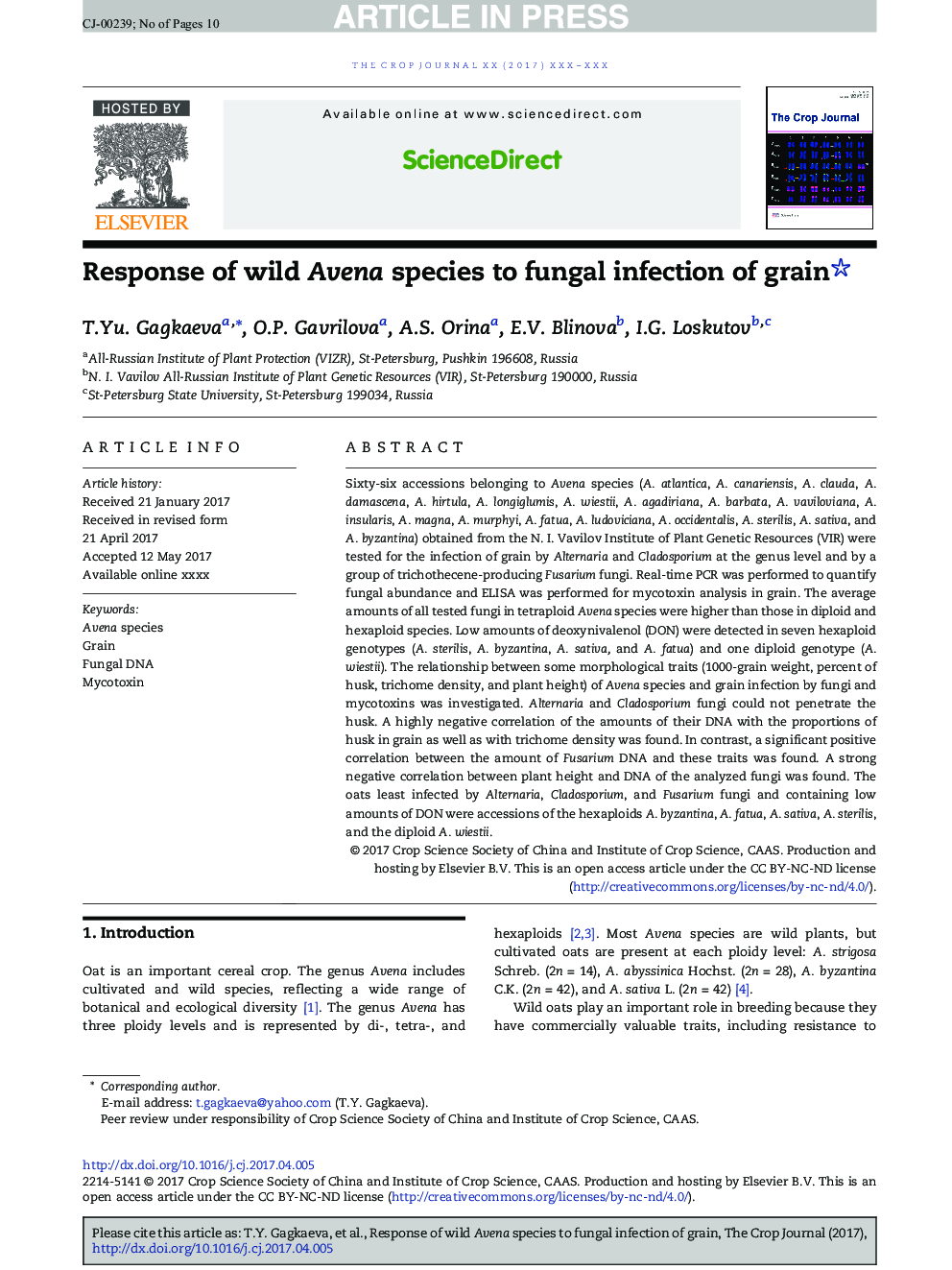| کد مقاله | کد نشریه | سال انتشار | مقاله انگلیسی | نسخه تمام متن |
|---|---|---|---|---|
| 8408819 | 1545079 | 2017 | 10 صفحه PDF | دانلود رایگان |
عنوان انگلیسی مقاله ISI
Response of wild Avena species to fungal infection of grain
دانلود مقاله + سفارش ترجمه
دانلود مقاله ISI انگلیسی
رایگان برای ایرانیان
کلمات کلیدی
موضوعات مرتبط
علوم زیستی و بیوفناوری
علوم کشاورزی و بیولوژیک
علوم زراعت و اصلاح نباتات
پیش نمایش صفحه اول مقاله

چکیده انگلیسی
Sixty-six accessions belonging to Avena species (A. atlantica, A. canariensis, A. clauda, A. damascena, A. hirtula, A. longiglumis, A. wiestii, A. agadiriana, A. barbata, A. vaviloviana, A. insularis, A. magna, A. murphyi, A. fatua, A. ludoviciana, A. occidentalis, A. sterilis, A. sativa, and A. byzantina) obtained from the N. I. Vavilov Institute of Plant Genetic Resources (VIR) were tested for the infection of grain by Alternaria and Cladosporium at the genus level and by a group of trichothecene-producing Fusarium fungi. Real-time PCR was performed to quantify fungal abundance and ELISA was performed for mycotoxin analysis in grain. The average amounts of all tested fungi in tetraploid Avena species were higher than those in diploid and hexaploid species. Low amounts of deoxynivalenol (DON) were detected in seven hexaploid genotypes (A. sterilis, A. byzantina, A. sativa, and A. fatua) and one diploid genotype (A. wiestii). The relationship between some morphological traits (1000-grain weight, percent of husk, trichome density, and plant height) of Avena species and grain infection by fungi and mycotoxins was investigated. Alternaria and Cladosporium fungi could not penetrate the husk. A highly negative correlation of the amounts of their DNA with the proportions of husk in grain as well as with trichome density was found. In contrast, a significant positive correlation between the amount of Fusarium DNA and these traits was found. A strong negative correlation between plant height and DNA of the analyzed fungi was found. The oats least infected by Alternaria, Cladosporium, and Fusarium fungi and containing low amounts of DON were accessions of the hexaploids A. byzantina, A. fatua, A. sativa, A. sterilis, and the diploid A. wiestii.
ناشر
Database: Elsevier - ScienceDirect (ساینس دایرکت)
Journal: The Crop Journal - Volume 5, Issue 6, December 2017, Pages 499-508
Journal: The Crop Journal - Volume 5, Issue 6, December 2017, Pages 499-508
نویسندگان
T.Yu. Gagkaeva, O.P. Gavrilova, A.S. Orina, E.V. Blinova, I.G. Loskutov,